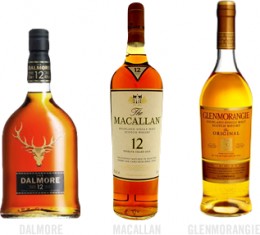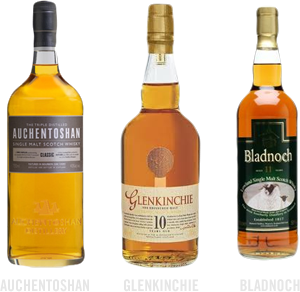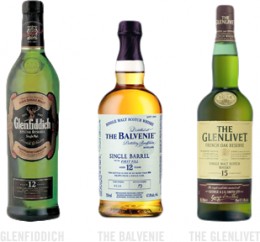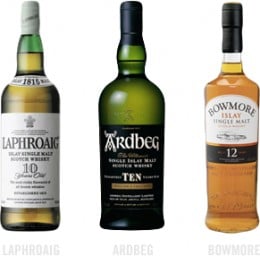A Beginner's Guide to Whisky - Part 4 - Scottish Whisky (Scotch)

Scotland:
Scotland has revolutionised the whisky trade. What makes Scotch unique is how it varies from region to region. For such a small country, there is staggering variety. Whether it’s notes of iodine and smoke from Islay, or floral nuances from the Highland region, there is a Scotch whisky out there for everyone.
Scotland also has more distilleries than any other country. Most people assume that all Scotch is "smoky", but only a handful are. This is a remnant of the malting process, where smoke from burning peat is used to dry the barley. Nowadays, it’s an optional flavour enhancer.
“Single malts” must be made in Scotland and matured least 3 years in oak barrels. They are produced at a single distillery, using malted barley as grain. This usually makes them more unique and costly.
“Blended scotches” tend to be easier to drink, but much trickier to make. Blend masters receive whisky from all over the country and try to create a mixture that tastes the same as the whisky they made last year, even though the ingredients have changed. The blending smooths out the rough edges of a single malt, creating a mellower flavour.
- Grains: Barley, Malted-Barley, Corn, Wheat
- Age: Minimum 3 Years
- Styles: Single Malt, Blended Malt, Blended, Grain

Highland
Highland Scotches vary in character, encompassing flavors and styles from all across Scotland. The Highlands have become renowned for their single malts.
Highland Scotch attains flavours often doused in honey and they're generally they’re considered to be medium-bodied and aromatic, with a broad range of tasting notes from complex to delicate.

Lowland
These light, accessible whiskies have rather been eclipsed by more famous varieties. As a result, there are only three true distilleries that remain in this region. They produce whiskies with a light body, relative sweetness, and a dash of flavor.

Speyside
Considered by some to be the most elegant of the country’s whiskies, Speyside whiskies are known for a smooth, fruity finish due to the fresh water from the Grampian mountains used for distillation.
It is perhaps unsurprising then that this region contains the largest concentration of distilleries in all of Scotland and produces some of the most famous whiskies, such as Glenfiddich and Macallan.

Islay
This is what people think Scotch tastes like. Easily the most distinctive of the regions, this smoky, salty whisky draws heavily from its location and the use of peat (partially decayed vegetable matter formed in bogs and wetlands) moss to dry the barley malt.
Pronounced like "island", without the "nd", and situated off the west coast of Scotland, the smoky scent of peat and the medicinal tang of iodine envelop the nose. I know what you're thinking: It sounds awful. Someone once said to me that drinking Islay whisky is: "Like being punched in the face with dirt...You don't so much drink Islay scotch so much as you drink Islay".
So, work yourself up to this one. There is certainly no denying that it's an acquired taste, and it'll take some practice drinking whisky to fully appreciate the drink. It is well worth the effort though, and a well-made Islay Scotch maintains its weight in gold.
What next?
That concludes our tour of whiskies around the world. I hope you enjoyed learning about Scottish whisky. If you did, you may be interested in the other articles that make up this guide if you haven't seen them already:
- Part 1 - Irish Whiskey and its Origins
- Part 2 - American Whiskey and Bourbon
- Part 3 - Canadian and Japanese Whisky
As always, thank you for reading, and please feel free to leave a comment below.









